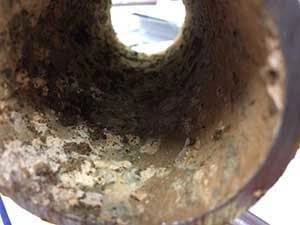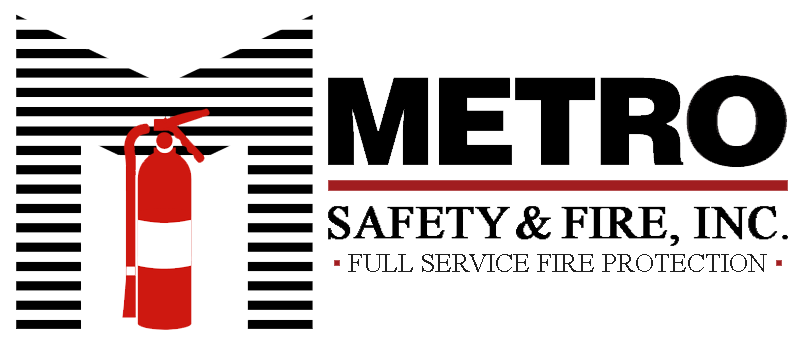
- Home
- MIC Remediation Prevention
MIC Remediation Prevention
MIC Remediation Prevention
SERVING PORTLAND OR | BEAVERTON OR | VANCOUVER WA | HOOD RIVER OR
Without testing your Fire Sprinkler systems for MIC, there is really know way to tell how long your system will last or how long it would be until it needs to be replaced. Is it functioning properly right now? Will it protect the property as designed and installed? What is MIC and how do you know if you have a MIC problem? MIC stands for Microbiologically Influenced Corrosion causing bacterium. There are three main types of bacteria that accelerate corrosion in fire sprinkler piping.
Corrosion in fire sprinkler piping starts with the presence of water, iron, and oxygen. This is commonly referred to as "generalized corrosion," or otherwise known as rust, or iron oxide. MIC accelerates this normal condition of sprinkler piping and reduces the lifespan of the piping. Studies show that 70-90% of corrosion is generalized, and 10-30% of corrosion is influenced by MIC.
MIC can be tested for and prevented. The use of Nitrogen has proven to be the most effective way in preventing both MIC and generalized corrosion. The reduction of oxygen in piping systems reduces the ability of the "iron oxide triangle" to work, as well as reducing the ability for bacteria to thrive.
Having a qualified and certified company is important to determining whether your system has a MIC problem or a generalized corrosion issue. Metro Safety & Fire, Inc. is qualified and certified to test for MIC and provide knowledgeable solutions to preventing it.
FAQs about MIC Remediation Prevention
- What is "MIC"?
- MIC is the acronym for Microbiologically Influenced Corrosion. This particular mode of corrosion is the reaction of microbes causing or influencing other types of corrosion process's, usually in metallic materials.
- What causes MIC?
- A combination of bacterial microbes, water, oxygen, nutrients, and metal, causes MIC. These bacteria are omnipresent in the environment and in the piping materials. Microbial growth will occur when all of these conditions are present. When all the nutrients, such as oxygen, have been consumed the microbes may become dormant. When the nutrients are replenished, the microbial growth resumes. Replenishment of nutrients happens when new oxygenated water is introduced to the fire sprinkler system. This process can happen when: flow testing happens, draining and refilling the system, leaks in the piping, periodic filling or tripping the dry system.
- Why is MIC a problem?
- Consumption of the metal pipe occurs as the MIC bacterium grows. Tubercle's are formed and pitting of the pipe takes place. The pipe walls then become compromised and the flow characteristics of the pipe become degraded.
- Example of Multiple Bacteria's Present

- How do you test for MIC?
- A simple test is performed. Using a "back-pak" test kit, a water sample can be taken from the pipe and tested. The nine day test period can determine what bacteria, or bacteria's, are present in the pipe. This is the least expensive method and the least obtrusive method as well. With this test kit can essentially determine if the bacteria are present, what type of bacteria is present, what damage the bacteria is known for, and potentially how bad the problem is.
- Why should MIC testing be done?
- NFPA 25 "Standard for the Inspection, Testing, and Maintenance of Water- Based Fire Protection Systems" requires an obstruction investigation every 5 years, or when there is evidence of rust, foreign debris, pinhole leaks, or a loss in flow pressure. The NFPA 25 requires that if "tubercles" are found or slimes and debris are observed, they shall be tested for MIC. (NFPA 25 2014 section 14.2.1.4).
- Can dry systems have issues with MIC?
- MIC is almost always more prevalent in dry systems. After a dry system has been flushed, tripped, or had its 3 year full trip test, some water remains in the fitting edges, low points of the system, and of course the drops. The MIC bacteria find these conditions favorable, due to the high amounts of trapped oxygen and small to moderate pools of stagnate water.
All dry system use an air compressor to fill and monitor the dry side of the system. Most compressor's however do not use a water separator or desiccant tower to remove the water vapor created by compressing the air. This potentially can and will fill the system over time with water vapor, which over a period of time will accumulate to water. This process attributes to the growth of MIC by providing a favorable condition in the system piping for MIC to flourish. - What steps can be taken if MIC is found?
- The early detection of MIC has proved to be significant in the treatment of MIC. Treatment can vary from mechanical cleaning, flushing, killing of the microbes on the interior wall of the pipe, chemical treatment of the water. If the MIC problem has reached a level where the pipe has been compromised, either by pin hole leaks, or significant thinning of the pipe wall, the pipes must be replaced. This can be expensive and disruptive to the building operations. Inspection's done with a video bore scope at every 5 year cycle required by NFPA 25, is the best defense a building owner can take for progressively fighting the battle against MIC.
- How can Metro Safety & Fire, Inc. provide you with a MIC solution?
- Metro Safety & Fire, Inc. test for MIC using a "Back-Pac" test kit. This test kit will test for all MIC causing bacteria, and will essentially determine how significant the MIC problem is. We also provide 5 year internal inspection for all systems using two different methods. The first method is visually inspecting the pipe per NFPA 25, at several different locations in the system, and providing an analysis with picture documentation. The second method is using a video bore scope on systems where opening up the pipe can be difficult or disruptive to the customer.
